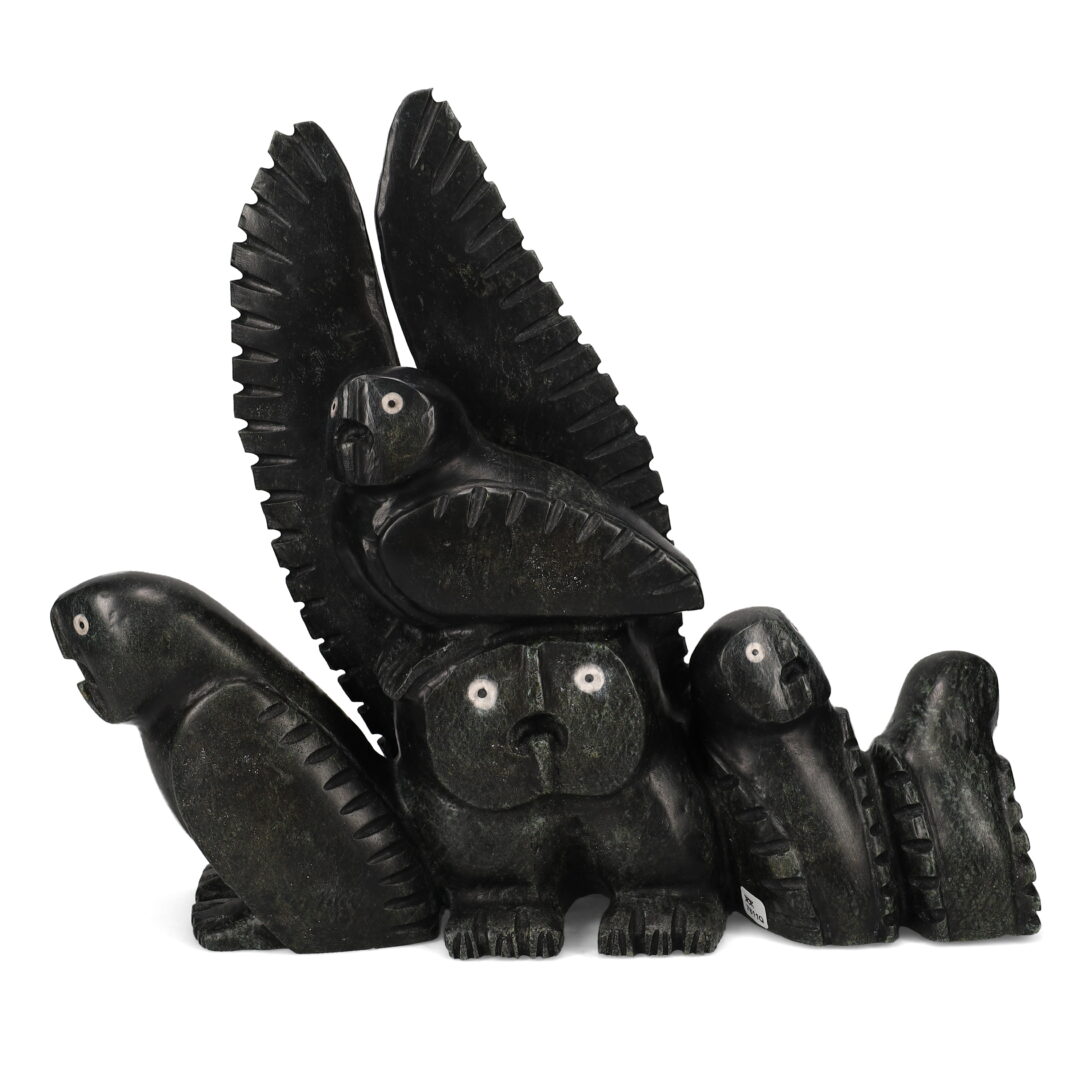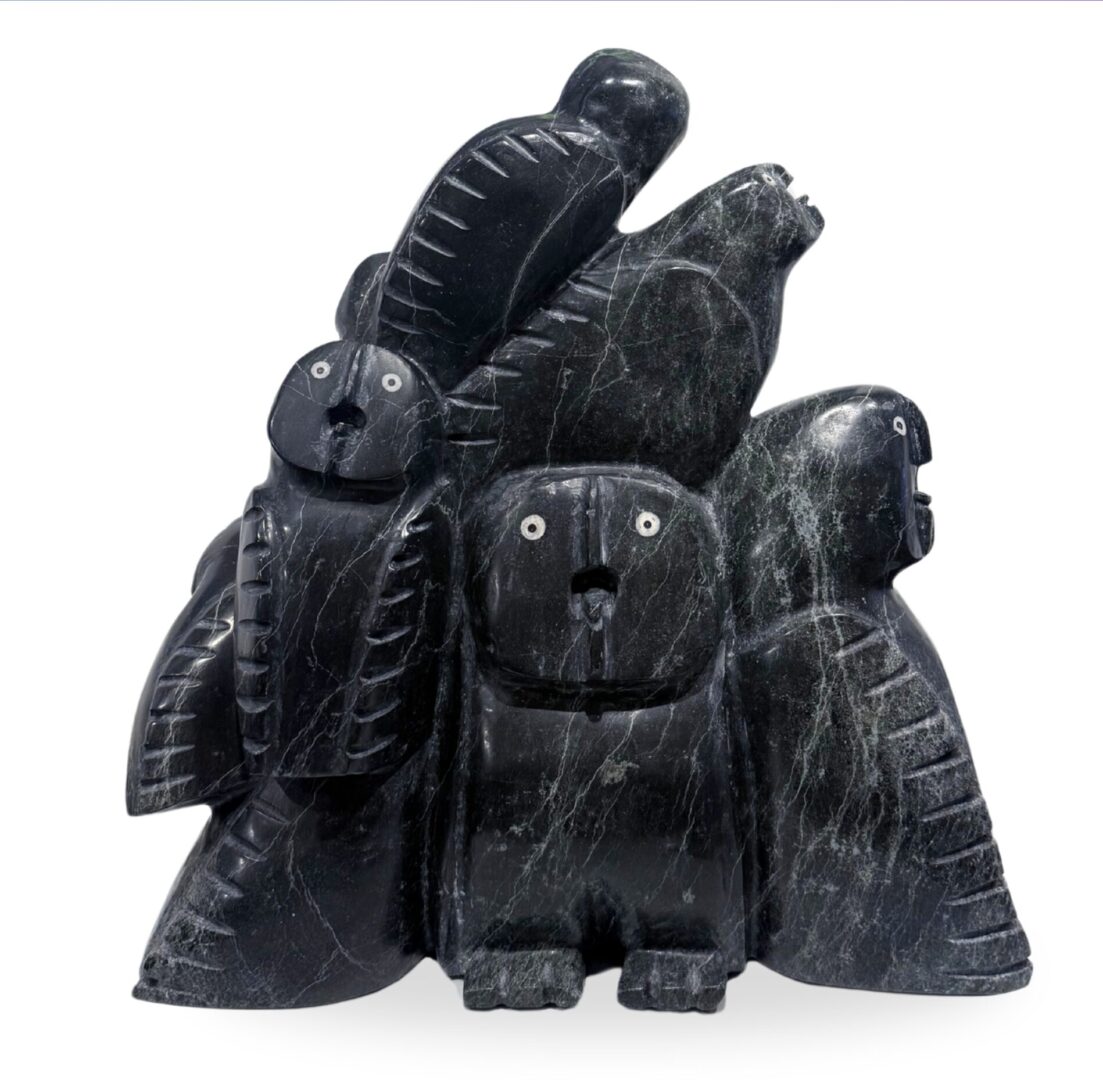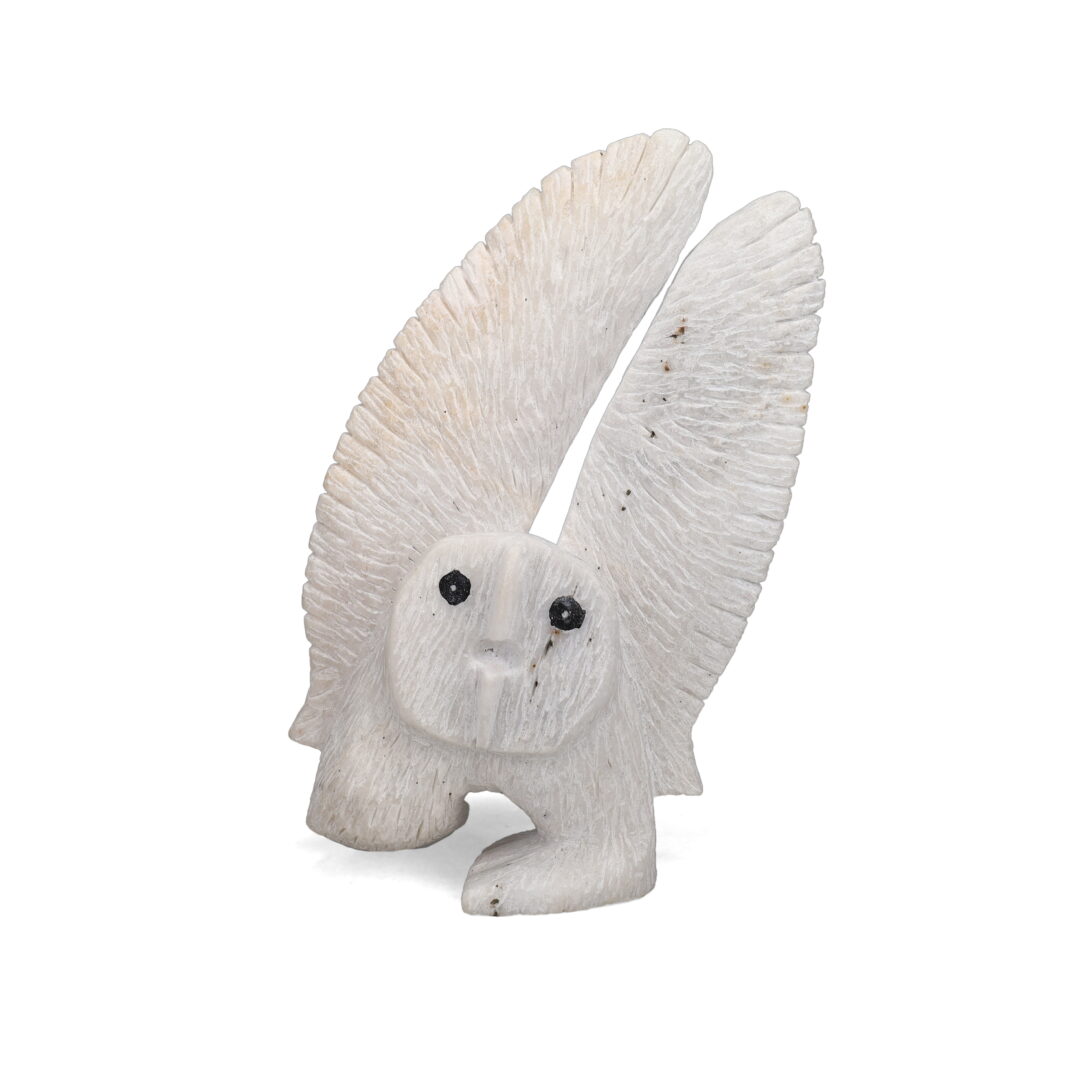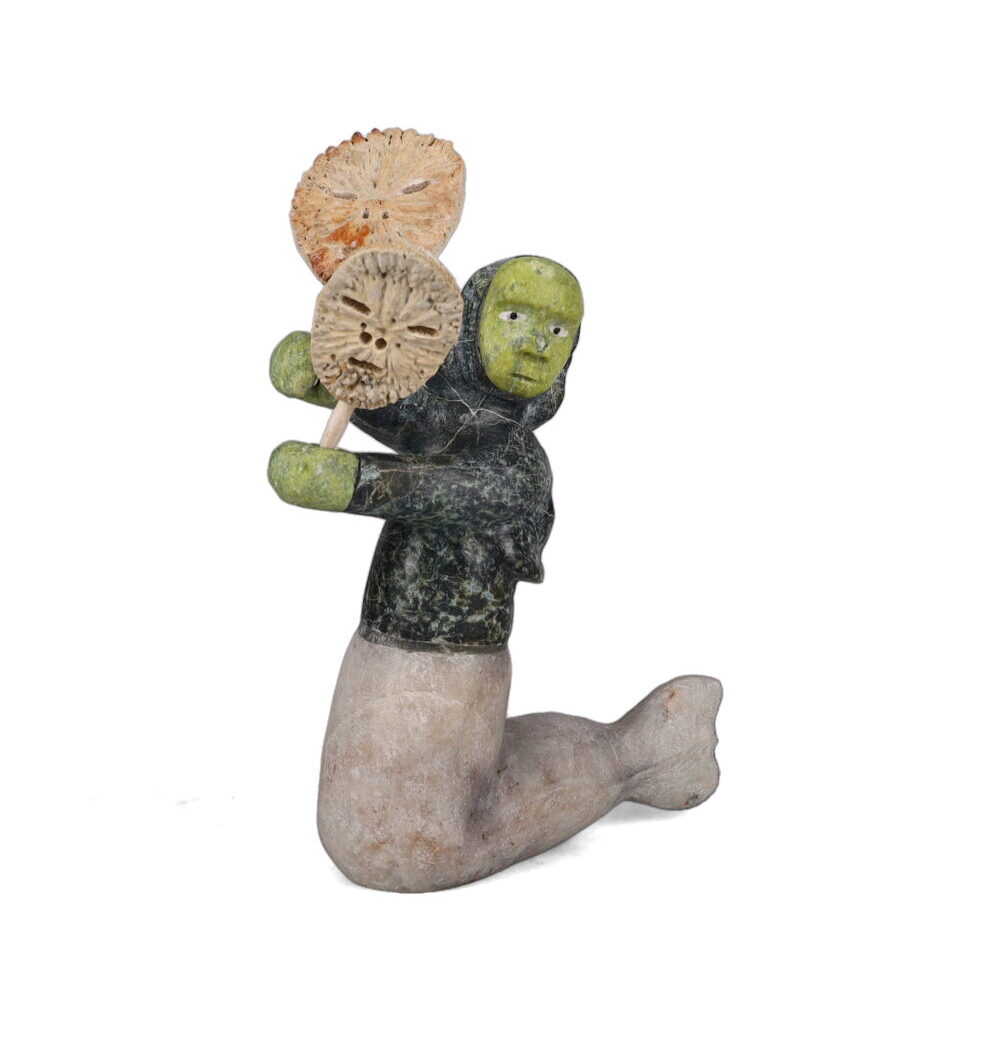Palaya Qiatsuk

Born May 10, 1965 (Cape Dorset, Nunavut)
Palaya Qiatsuk (Padlaya; Qiatsuk; Qiatsook; Kiatsoo; Kiatsooq; Qiatsooq) began sculpting around 1977, when he was only twelve years old. He learned to sculpt from his father, the famous sculptor and printmaker Lukta Qiatsuq, whom he credits as being an important influence in his work.
Recognized as one of the most important artists in the Cape Dorset art community, Qiatsiuk works with serpentine stone, marble and, on occasion, fossilized whale bone. He sculpts figurative works, transformational themes being his favourites. The attention to detail in each of his pieces is an undeniable aspect of his art.
Palaya is passionate about preserving Inuit culture. His goal is to keep traditional stories alive through his work. He remains confident that if culture is to survive, young people must learn from the past. He is keen that those who see his sculptures will have a better understanding of the struggles of their ancestors as well as their dependence on the land and wildlife: “I love sculpting transformations. This is one of my favorite [themes] […] when I make transformational or shamanistic sculptures, [I hope] the younger ones will see the sculpture in a book or in a gallery. I want them to know that these traditions must be respected […] They must know that our ancestors had difficulty in living, in hunting. Sometimes they were starving to death. These sculptures are important to me and I want to show these young people – and others – that this has happened before. ”
Qiatsuk is frequently invited to attend the openings of the exhibitions and to give sculpture demonstrations in various places. Having an impressive exhibition record for his age, this artist has exhibited in many countries, including Canada, the United States, France, Germany and Switzerland.
In 2006, he was invited to do a sculpture demonstration at Canada House (London), on the occasion of Canada Day.









